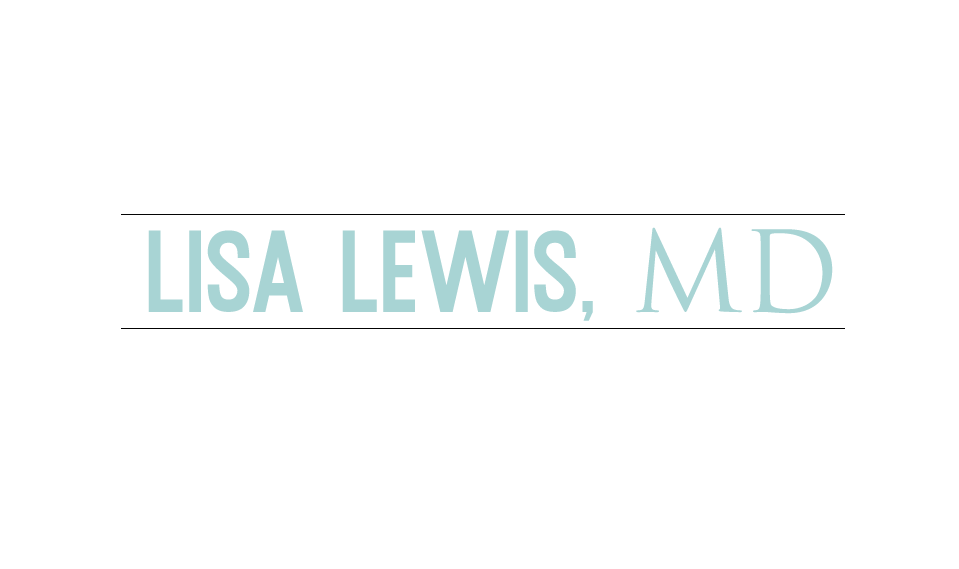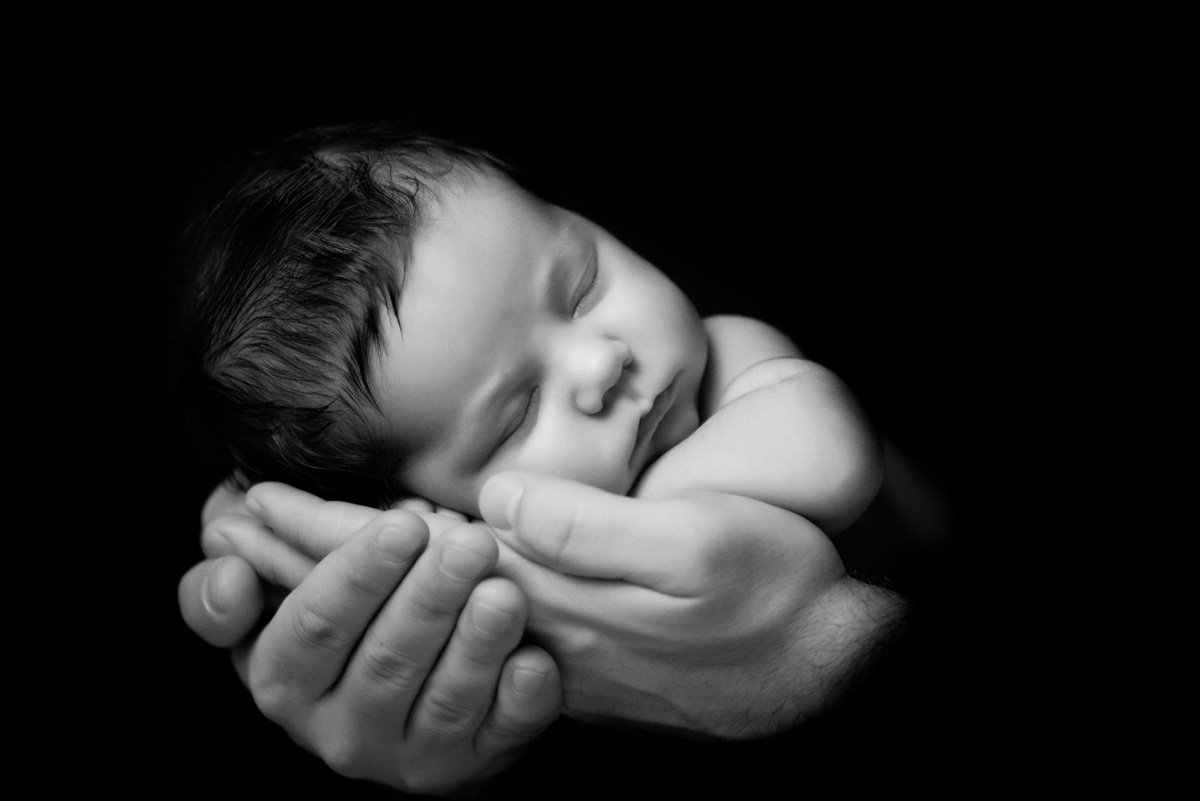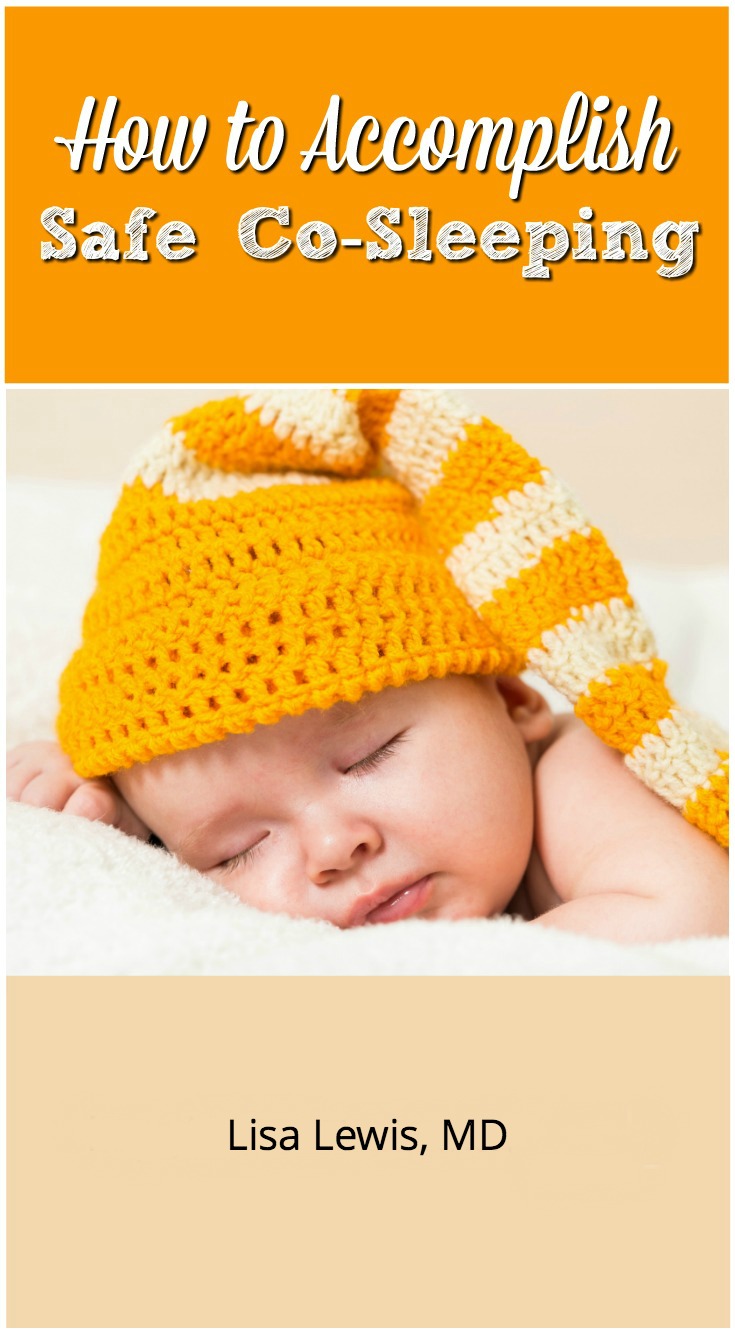Should You Co-Sleep with Your Baby?
First, let’s explain the difference between simply sharing your bed with your baby and “co-sleeping.”
Co-sleeping and bed sharing have similarities, but they’re not the same. Co-sleeping is placing the baby in his or her own sleep area close to the parent; bed sharing is laying the baby next to a sleeping adult but not giving the infant his or her own safe sleep area.
Multiple studies have advised against bed sharing due to increased risk of sudden infant death syndrome or SIDS. The American Academy of Pediatrics (AAP) recommends to not put your baby next to you in the bed while you sleep.
When I started as a pediatrician, I was ready to enforce the “no co-sleeping” criteria with military strictness. Early on as a medical student, I was taught that giving a baby his or her own bedroom to foster independence was the right concept.
Full disclosure: I co-slept with both of my children. However, to reduce the risk of SIDS, I made a point of doing it safely. I gave them their own separate sleep area. Having a comfortable, accessible sleep area makes nipple feeding through the night more convenient. (Nipple feeding is defined as either breastfeeding or bottle-feeding with pumped breast milk or formula.) I was able to roll over, check for the rise and fall of their chests, cuddle a moment, and fall back asleep.
Co-Sleeping Practices Worldwide
While doing research for my book, I observed parents in Italy and other parts of Europe savor sleeping next to their babies or “bed sharing.” In fact, Italian mothers are rarely consumed by the concept of sleep schedules or rules. Worldwide, mothers and babies sleep together for bonding, nurturing, warming, and sharing affection. Infants feel content when they are physically close to their parents.
I totally get that. But allow me to point out that different cultures have different sleep environments. Americans, and many Europeans, tend to wrap themselves in a nest of pillows and blankets. Further, hospitals in North America and Europe have the benefit of medications for a new mother. Medications can cause a mother to fall into a deep sleep, increasing the risk of rolling over and suffocating her baby.
Dangers to Be Aware Of
Blankets, pillows, stuffed animals, and similar items should be outside the baby’s sleep area. If you’re in the room watching your baby, allow him or her to sleep on the side or belly—any position you’d like. In fact, it’s good to change the baby’s positions because it strengthens muscles in his or her body. But when you are leaving the room or going to sleep, always put your baby on his or her back.
How to Safely Co-Sleep
Looking at people that practice safely co-sleeping, I repeatedly see that the baby has his or her own sleep space with good ventilation. You can sleep together with no health risks to the baby.
Here are three ways to accomplish safe co-sleeping:
Bassinet: Place a bassinet that sits independently by your bed with your baby. You can enjoy watching your tiny one and roll over to touch him or her any time you like.
Co-Sleeper Attached to Bed: Many co-sleeper designs are available as an attachment to your bed. This co-sleeper separates your baby from being on a soft mattress, blankets, and pillows. It also keeps him or her close, comfortable, and safe to you.
Co-Sleeper in the Bed: This is a portable sleeper that can be moved around the house and placed in your bed. A co-sleeper must be isolated from pillows and blankets that could impair your child’s ventilation.
Don’t Want to Co-Sleep?
No worries. You can save your cuddles for daytime. Many parents have trouble sleeping with their baby nearby. I believe a rested parent is a better, more relaxed parent while awake. Giving hands-on affection any time, day or night, stimulates your baby’s brain and helps foster contentedness.
If co-sleeping isn’t right for you, know that babies are able to bond and feel love without it. Happy Snuggles!


